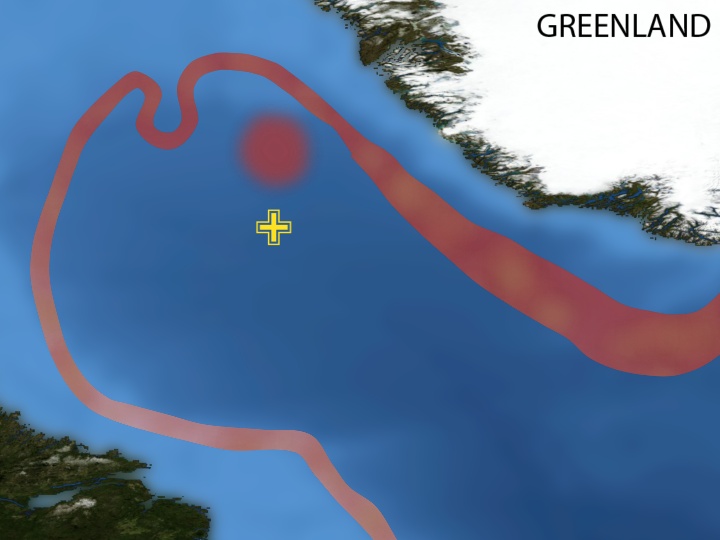
Bower Main Page Physical Oceanography Department WHOI Homepage WOCE Float Data Assembly Center OceanInstruments: RAFOS Float Float Data Processing EUROFLOAT Homepage |
|
maintained by Heather Furey (hfurey@whoi.edu); last updated on 28 November 2007. |
|
|
|
Irminger Rings Project Impact of Irminger Rings on Deep Convection in the Labrador Sea |
Project Summary  PI: Amy Bower (WHOI) Deep ocean convection is limited to a small number of isolated regions worldwide, including the Labrador Sea, but it has a profound impact on the ocean’s thermohaline circulation and climate. While the convection process itself has been studied intensively over the last decade , the restratification of the water column after convection, which will directly impact convection during subsequent winters, is not as well-studied. It has recently been suggested that the decay of coherent, long-lived, anticyclonic eddies shed from a surrounding warm boundary current are potentially important in restratifying convection regions. This idea is most developed in the Labrador Sea, where anticyclonic eddies containing a core of warm, salty water from the Irminger Current (a remnant of the Gulf Stream) have been observed. The goal of the proposed research is to advance our understanding of the role of Irminger Rings in deep convection by collecting new information on their initial structure and on the evolution of their core properties as they propagate across the Labrador Sea.
|
| More
... Oceanus, December 5, 2007: Submerged Autonomous Launch Platforms |
 To meet this goal, we plan to deploy one densely instrumented mooring
in the northeastern Labrador Sea near, but offshore of the eddy
formation site to document the full water column hydrographic and
velocity structure of about 12 new rings where they detach from
the boundary and enter the interior. The mooring will also serve
as the “launch pad” for the automatic release of a profiling float
each time an eddy sweeps by the mooring. Trapped within the eddies
by the strong azimuthal velocities, the floats will track the eddy
trajectories and measure changes in eddy core properties as they
move from the formation site toward the convection region. When
this research program is completed, we will have unprecedented information
on the structure and heat and salt content of nascent Irminger Rings
that have separated from the boundary, improved estimates of the
heat and freshwater fluxes associated with rings, and new information
on where and how their anomalous core properties are spread within
the Labrador Sea.
To meet this goal, we plan to deploy one densely instrumented mooring
in the northeastern Labrador Sea near, but offshore of the eddy
formation site to document the full water column hydrographic and
velocity structure of about 12 new rings where they detach from
the boundary and enter the interior. The mooring will also serve
as the “launch pad” for the automatic release of a profiling float
each time an eddy sweeps by the mooring. Trapped within the eddies
by the strong azimuthal velocities, the floats will track the eddy
trajectories and measure changes in eddy core properties as they
move from the formation site toward the convection region. When
this research program is completed, we will have unprecedented information
on the structure and heat and salt content of nascent Irminger Rings
that have separated from the boundary, improved estimates of the
heat and freshwater fluxes associated with rings, and new information
on where and how their anomalous core properties are spread within
the Labrador Sea.